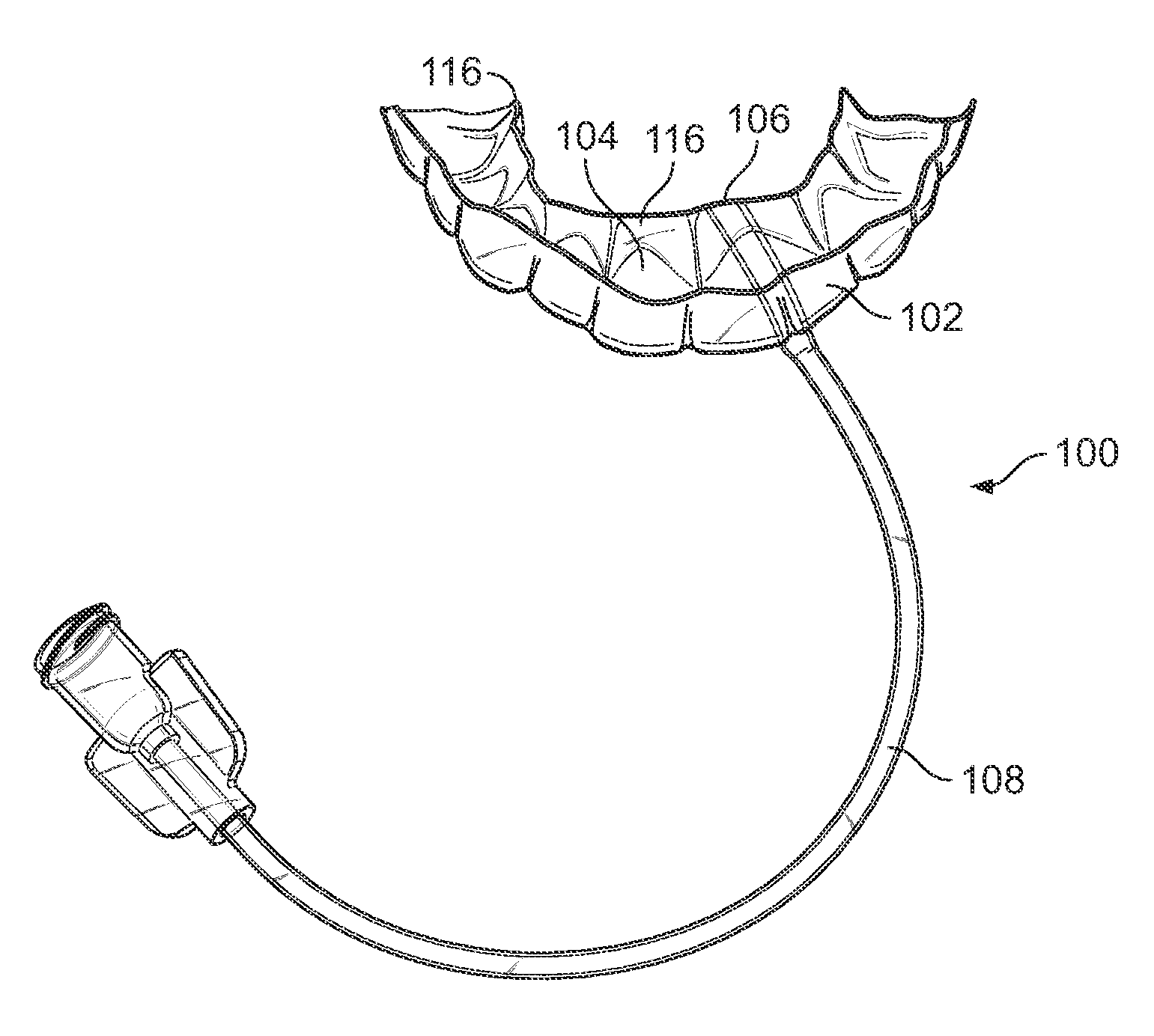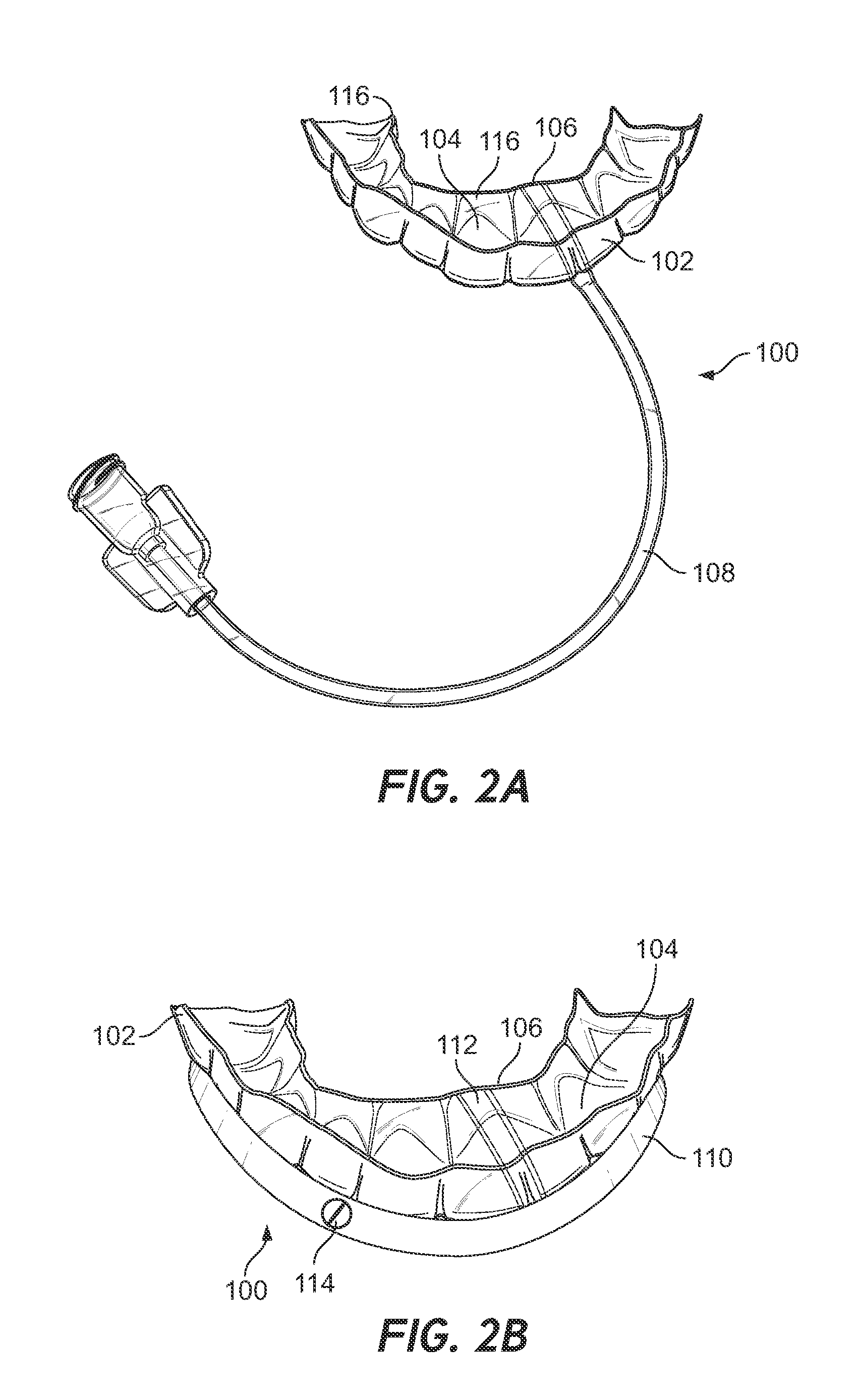System and method for delivering a therapy and sensing a biological activity in the mouth
a biological activity and therapy technology, applied in the field of system and method for delivering a therapy and sensing a biological activity in the mouth, can solve the problems of reducing work efficiency, snoring can disturb the sleep of others near the snoring individual, and reducing the ability to remain attentive on both the individual and the snoring individual
- Summary
- Abstract
- Description
- Claims
- Application Information
AI Technical Summary
Benefits of technology
Problems solved by technology
Method used
Image
Examples
example 1
[0087]As discussed above, abnormal head and neck anatomy and decreased pharyngeal dilator muscle tone are two primary contributors to OSA. Both conditions affect the tongue and result in the tongue's having a central role in OSA. One variation of a device using a stimulant (e.g., a flavored substances) to engage the tongue and alleviate tongue-related obstruction can include the use of one or more pressure sensors within the existing intraoral device. For example, FIG. 2A illustrates sensors 116 that will detect the presence or absence of the tongue in a desirable position within the mouth. FIG. 8A illustrates one example of a fiberoptic pressure sensor (supplied by FISO Technologies Inc., Quebec, QC, Canada).
[0088]In this example, the outer diameter of the sensor was 260±20 μm, and the outer diameter of the fiberoptic cable connecting to it (extending from the subject's mouth when deployed) was 1 mm. In some variations it is important that the sensors not interfere with tongue move...
example 2
[0092]1. Introduction:
[0093]The tongue plays an important role in snoring and obstructive sleep apnea, contributing to turbulent airflow and upper airway obstruction during sleep. An intraoral device is used in this experimental example to deliver flavored substances in the anterior oral cavity, with the goal of induced tongue chemoactivation and anterior tongue movement towards the flavored substances. The effect of this chemoactivation is to open the airway by overcoming the natural decrease in muscle tone during sleep that leads to posterior tongue prolapse. In this study, tongue sensors were incorporated into the intraoral device, placed immediately posterior to the maxillary (upper) central dentition. The objective of this study was to examine tongue chemoactivation and anterior tongue movement associated with the administration of flavored substances in the anterior oral cavity.
[0094]According to one aspect illustrated by this experimental study example, a tongue position sens...
PUM
 Login to View More
Login to View More Abstract
Description
Claims
Application Information
 Login to View More
Login to View More - R&D
- Intellectual Property
- Life Sciences
- Materials
- Tech Scout
- Unparalleled Data Quality
- Higher Quality Content
- 60% Fewer Hallucinations
Browse by: Latest US Patents, China's latest patents, Technical Efficacy Thesaurus, Application Domain, Technology Topic, Popular Technical Reports.
© 2025 PatSnap. All rights reserved.Legal|Privacy policy|Modern Slavery Act Transparency Statement|Sitemap|About US| Contact US: help@patsnap.com



